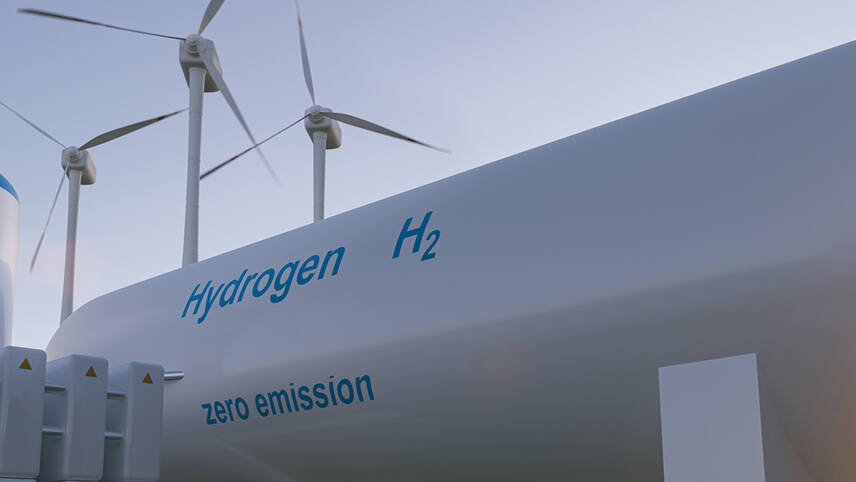This is the Sponsored paywall logged out

As the last 18 months have shown, managing the competing demands of energy security, sustainability and affordability is not simple. The ambition to deliver a sustainable future and move away from fossil fuels as an energy source is becoming ever more pressing – but we cannot neglect the other two concerns in the process.
 The question of how the UK can reach net zero by 2050 will arguably be the most difficult question posed to our government in our lifetime. Although it may appear to be one question with one answer, it actually opens up a labyrinth of possibilities; with every future energy scenario producing its own unique obstacles and rewards.
The question of how the UK can reach net zero by 2050 will arguably be the most difficult question posed to our government in our lifetime. Although it may appear to be one question with one answer, it actually opens up a labyrinth of possibilities; with every future energy scenario producing its own unique obstacles and rewards.
The unfortunate reality is that the net zero question is impossible to answer right now.
Much like a multi-layered riddle, it may be that the solution to the UK’s energy transition can only be discovered by answering smaller questions one by one, mapping out the complex systems that make up our energy infrastructure as we go and navigating each one with care, to ensure we can also maintain energy security and affordability with each step forward.
Although the end destination – a low-carbon energy system – is set, the final energy solution is still unknown. Rather than one solution, such as electrification or hydrogen, I foresee a blend of technologies and energy sources complementing each other to deliver net zero.
Asking those difficult questions
As a not-for-profit organisation funded by the British gas industry, Xoserve wants to do the right thing for both the industry and consumers. So we’re thinking a lot about what needs to change in the coming years. As we work with industry and other stakeholders to address the net-zero challenge, there are two common tasks I’m asking everyone in the energy industry to take on for this year and beyond: the need to ask difficult questions and the need to face inconvenient truths.
We all know we need to move to alternative energy sources, but 85% of homes are currently heated by natural gas. How are we going to create enough power generation and transmission capacity to electrify the UK’s ever-growing energy requirements?
When the UK moves away from natural gas, how is the existing gas network best decommissioned? The existing infrastructure would need to be in place until the very last person is moved off gas – how is this best managed?
You can quickly see how posing one or two difficult questions suddenly prompts several more. Yes, there are no easy answers to these questions, but we must start asking them. So I intend to go on doing so.
A major discussion point in the energy sector is how the government and the energy industry will persuade consumers to move to alternative forms of heat and energy supply. How comfortable are consumers with hydrogen as a heating technology? If they don’t feel confident with hydrogen, then what alternatives do they have, especially if their property isn’t suited to a heat pump?
As consumers transition away from fossil fuels to another energy source, what happens to the consumers who are left? How do we ensure that they are not unfairly disadvantaged through higher costs while they wait to be transitioned?
There will be more difficult questions that we simply can’t turn away from. And it’s only by answering them that we will be able to define a realistic, achievable way to deliver net zero.
Facing the inconvenient truth
A major inconvenient truth to bear in mind is that gas plays a vital part in the electricity market. At a recent Utility Week event, Dr Grant Wilson, a lecturer at the University of Birmingham and Fellow of the Alan Turing Institute, really shone a spotlight on this. In the past year alone, 41% of electricity has been generated by fossil fuels.
This inevitably leads us to ask, how do we replace natural gas on a national scale? Energy storage was underlined as one of the solutions, but here too lies a difficult question. If low-carbon energy such as hydrogen or biogas is being generated and supplied at a local rather than national level, where will it be stored and how?
Whatever route is ultimately taken to support decarbonising heat, something has to replace the 738Twh of energy that gas produces on an annual basis, whether that’s hydrogen, renewable electricity, or nuclear generation.
No one person or organisation has all the answers – but as we start to examine some of these difficult net-zero questions in detail, a mix of energy sources starts to look like the most realistic and universally-beneficial solution.
Read more on decarbonisation and the challenges facing the energy sector at https://www.xoserve.com/





Please login or Register to leave a comment.